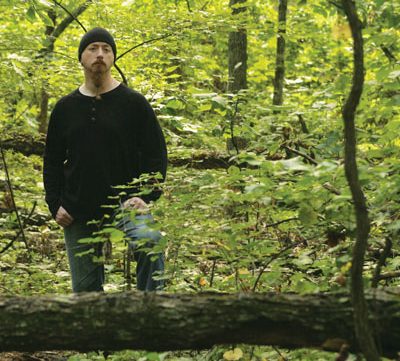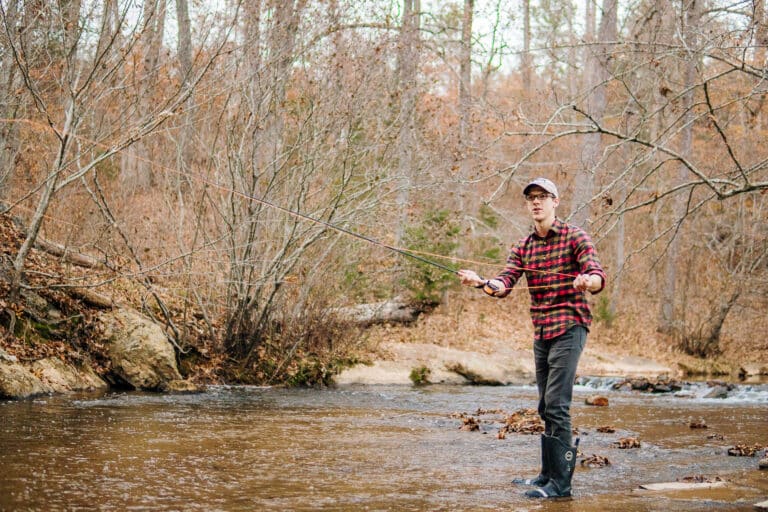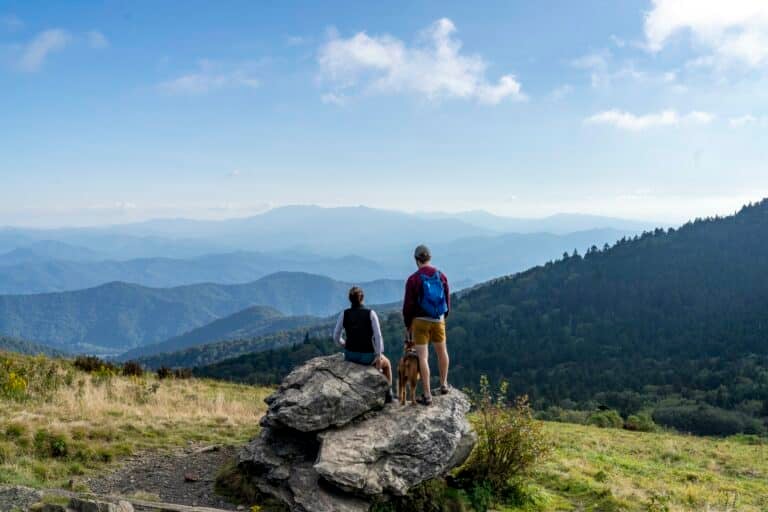When most people think of mountain music, they envision banjos and fiddles. Appalachian black metal artists often use those instruments, too, but pair them with blastbeats, shrieked vocals and waves of distortion to create a sound that evokes epic mountain vistas and a long-suffering people.
To the uninitiated, the link between nature and metal may sound bizarre. However, black metal’s concern with the outdoors dates back to its inception, and images of corpse-painted Scandinavian bands traipsing through snowy forests in the early ’90s became an integral part of the genre’s imagery.
For today’s Appalachian black metal artists, the link between nature and their music is real and authentic. Many invest lots of time hiking and exploring the landscapes around their homes. Those experiences are then incorporated into the tapestry of the music. Their songs also become outlets to explore facets of Appalachian history, whether through politics of coal mining or violence between early settlers and native peoples.
Appalachia’s version of black metal didn’t really make a national impression until 2012, when Panopticon released “Kentucky,” its breakthrough album, which continues to stand as the definitive Appalachian metal album released to date. With its leafy green ridge-strewn album cover, interpretations of coal mining labor anthems, and use of traditional mountain instruments, “Kentucky” embodies Appalachian landscape and culture.
The instrumental opening track, “Bernheim Forest in Spring,” features a fiddle and banjo with a traditional string band, which builds only to fall away before a roaring cascade of guitar distortion, blastbeats, and an Irish tin whistle that soars over everything as Lunn screams the opening verse of “Bodies Under the Falls”: “As the water passes over the rock bed, so gentle and quiet / You can hear their cries in the crashing water.”
“Bodies Under the Falls” chronicles the legendary massacre of Cherokee women and children at Yahoo Falls in 1810—an incident that has proven to be a powerful symbol yet also a fierce source of debate between historians over whether it actually happened. Other songs wrestle with similarly contentious incidents in Kentucky history, adding up to a powerful reckoning of the bluegrass state’s history and legacy.
“I just write about where my head and heart are at,” Lunn said. “A lot of the time that is in the woods or the mountains. These are the things that inspire me and make me feel whole.”
Other Appalachian black metal musicians continue to explore regional themes and push sonic boundaries. Paul Ravenwood grew up in Newport, Tennessee, a half-mile through the woods from his nearest neighbor. He spent a lot of time hunting, fishing and exploring the forest. In the late ’90s he discovered black metal when he heard Darkthrone’s pivotal “Transilvanian Hunger” on a camping trip.
“When I first heard those bands, we were always outside,” said Ravenwood, who is now based in Johnson City. “Something about the two went together.”
Eventually Ravenwood began recording his own music, painstakingly playing all the parts. He released his recordings under the name Twilight Fauna beginning in 2009. He fills his social media streams with photos from his weekly hikes throughout eastern Tennessee. The outdoor world informs his music, manifesting sometimes as a lyric and other times as a musical effect.
“I was hiking a couple of months ago and a grouse took off from near my feet as I was walking up the side of a mountain,” Ravenwood said. “It was the scariest thing. They sound like helicopters because they take off so fast. I could hear the tempo of its wings. When I got back to the house, I based one of my drum patterns off what I was hearing.”
The natural landscape also plays into the music of Vials of Wrath, a one-man black metal/post-rock project developed by D.C. Mills, who lives near Great Smoky Mountains National Park in Maryville, Tennessee. Mills describes the idea behind Vials of Wrath like this: “Nature-inspired metal intent on evoking solitude with an affinity for the divine.”
“In reading the Bible, I also found that Jesus advocated spending time alone in prayer, and he would often do so throughout the scriptures by retreating to the wilderness,” says Mills. “To me, it was a natural progression to incorporate my faith, love of nature and extreme musical background.”
Black metal musician Aaron Carey, based near Wheeling, W.Va., explores nature and Appalachian culture through the lens of Native American heritage. His mother’s family is descended from mixed-blood Lenapes and Shawnees.
“My mission has been to keep alive what was here before all that,” Carey said. “Some of these words are different from what they use now. Some of these words might seem made up or foreign, but I’m lucky to know them and lucky to know these songs.”
His band Nechochwen serves as an artistic outlet for that work. Many people in the region have native ancestry, but finding ways to connect in a tangible way is difficult and can be discouraging. Nechochwen, he said, functions “like a plant pushing through a crack in the concrete.”
“We try to tap into an almost lost thread of thinking about what it was like 2,000 years ago: learning about edible plants, getting food for yourself, building old dwellings, doing a sweat lodge,” Carey said. “These are traditions that are largely forgotten. When that music is playing, those traditions exist
again.”








